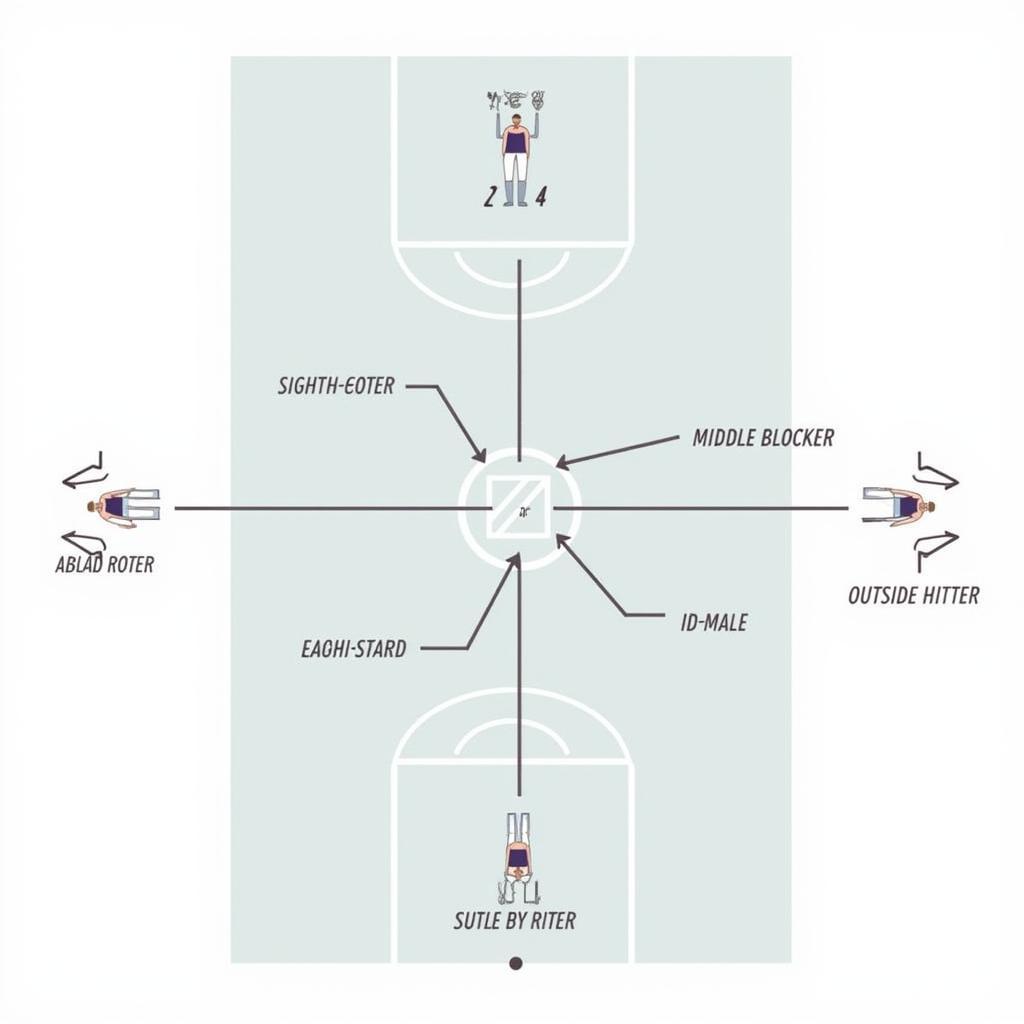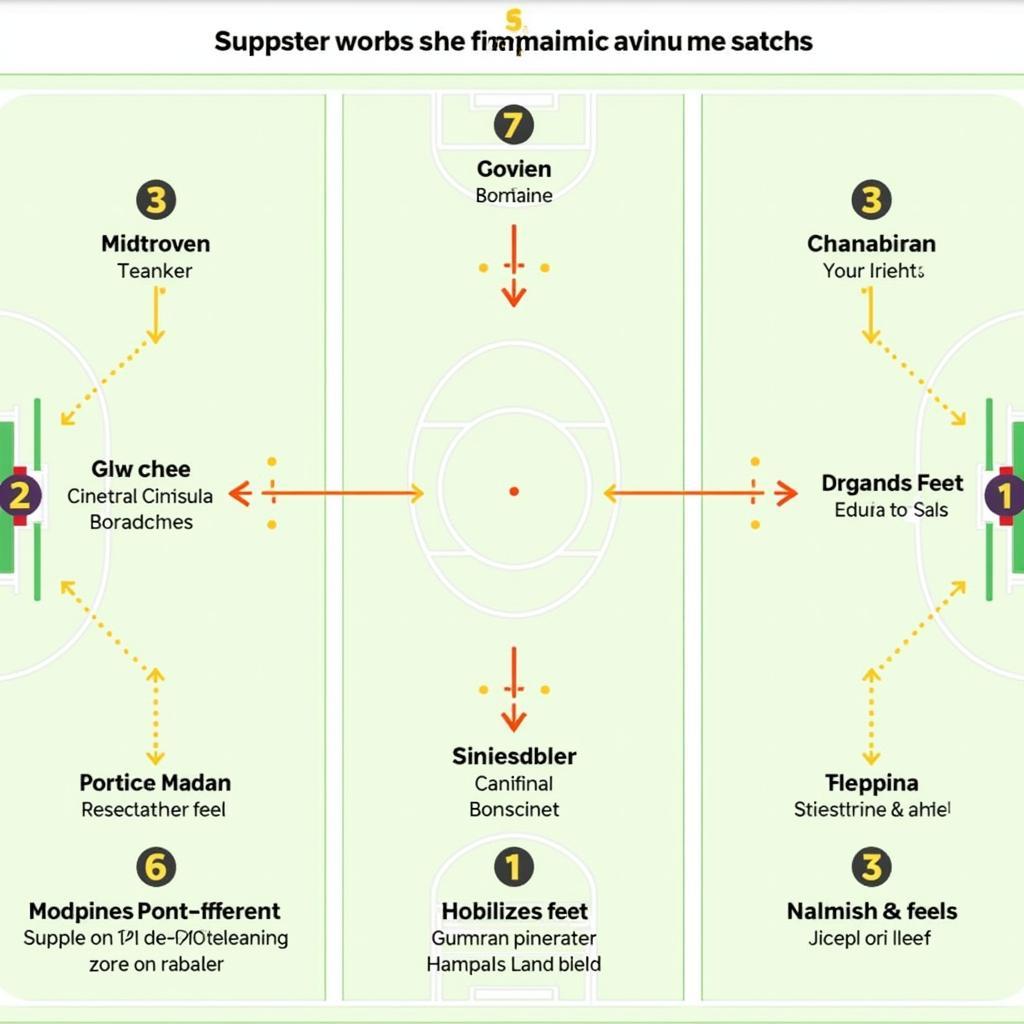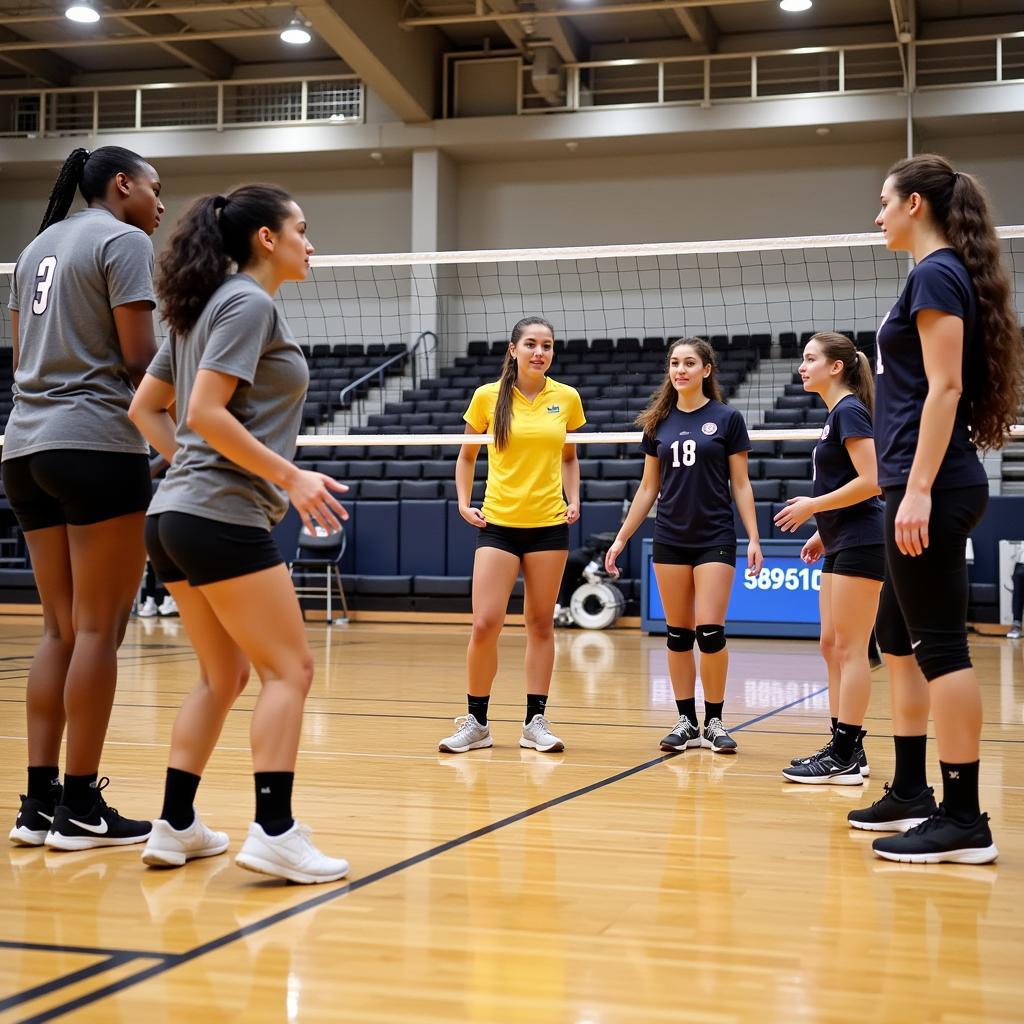The 6-2 defense is a volleyball strategy designed to have maximum blocking power at the net. It requires six players, with two setters who transition between setting and blocking roles. Mastering this defense requires not just individual skill but also seamless teamwork and strategic positioning. Whether you’re a coach looking to implement a new system or a player eager to understand its intricacies, having a comprehensive guide is crucial. That’s where the “6-2 defense playbook PDF” comes in handy.
Understanding the Fundamentals of the 6-2 Defense
The 6-2 defense relies on two setters rotating through the back row, ensuring that there are always three hitters positioned in the front row. This formation maximizes offensive potential while maintaining a strong block against the opponent’s attacks.
Here’s a breakdown of the key features:
- Two Setters: Unlike the 5-1 formation, which has only one dedicated setter, the 6-2 utilizes two players who alternate between setting and hitting.
- Three Front Row Hitters: This offensive setup provides more attacking options and keeps the opponent’s blockers guessing.
- Continuous Rotation: Players rotate positions throughout the game, ensuring everyone gets involved in both offensive and defensive plays.
Benefits of Employing the 6-2 Defense
- Enhanced Blocking: With three players consistently at the net, the 6-2 provides a formidable block, making it difficult for opponents to score points.
- Offensive Variety: Having two setters and three hitters in each rotation allows for diverse attacking options, keeping the opponent’s defense off-balance.
- Player Development: The 6-2 requires all players to be well-rounded, contributing to both offense and defense, fostering a team mentality, and promoting individual skill development.
 Volleyball court with marked player positions in a 6-2 defense formation
Volleyball court with marked player positions in a 6-2 defense formation
Key Positions and Responsibilities in the 6-2 Defense
Each player in the 6-2 formation has specific roles and responsibilities:
Setters:
- Orchestrate the offense by setting up hitters for successful attacks.
- Transition seamlessly between setting and blocking positions depending on their rotation.
- Possess strong communication skills to direct the offense and defense.
Outside Hitters:
- Primary attackers from the left side of the court.
- Responsible for hitting from both the front and back rows.
- Play a crucial role in blocking the opponent’s outside hitter.
Middle Blockers:
- Positioned in the middle of the net.
- Primary responsibility is to block the opponent’s middle and weak-side attacks.
- Often involved in quick attacks and dumps.
Liberos:
- Defensive specialists who substitute for back-row players.
- Focus on receiving serves and digging attacks.
- Possess exceptional passing and defensive skills.
 Detailed illustration of player roles and responsibilities in a 6-2 defense
Detailed illustration of player roles and responsibilities in a 6-2 defense
How to Implement the 6-2 Defense Effectively
Successfully implementing the 6-2 defense demands meticulous planning, consistent practice, and open communication amongst players.
Here’s a step-by-step approach:
- Player Selection: Identify players who are versatile and adaptable, capable of playing multiple roles. Strong communication and teamwork are essential.
- Skill Development: Focus on individual skills like setting, hitting, blocking, digging, and serving. Each player must be proficient in their designated role.
- Team Cohesion: Conduct drills and practice sessions that emphasize communication, court awareness, and seamless rotation between positions.
- Game-like Scenarios: Simulate various game situations to allow players to practice their roles and adapt to different offensive and defensive scenarios.
Mastering the 6-2 Defense: Tips and Strategies
- Communication is Key: Encourage constant communication between players, especially the setters and hitters, to ensure smooth transitions and successful attacks.
- Quick Decision-Making: Players need to make split-second decisions based on the opponent’s attack and the team’s positioning. Regular drills can enhance reaction time.
- Adaptability to Opponents: Study the opponent’s offensive strategies and adjust the 6-2 accordingly. Recognizing their strengths and weaknesses is crucial.
- Continuous Improvement: Regularly review game footage to analyze strengths and weaknesses in the team’s execution of the 6-2.
 Volleyball team practicing 6-2 defense drills with a coach
Volleyball team practicing 6-2 defense drills with a coach
Conclusion
The 6-2 defense is a dynamic and challenging volleyball strategy that can significantly strengthen your team’s performance. It requires dedication, teamwork, and a deep understanding of the system. By utilizing a “6-2 defense playbook PDF” and consistently working on the key elements highlighted in this guide, coaches and players can unlock the full potential of this effective defensive system, paving the way for success on the court.
Remember, mastering the 6-2 defense is an ongoing process that demands constant practice and adaptation. Embrace the challenge and watch your team transform into a formidable force on the volleyball court.
Need further assistance in elevating your volleyball game? Contact us! We are available 24/7 to assist you.
Phone Number: 0902476650
Email: [email protected]
Address: 139 Đ. Võ Văn Kiệt, Hoà Long, Bà Rịa, Bà Rịa – Vũng Tàu, Việt Nam.





